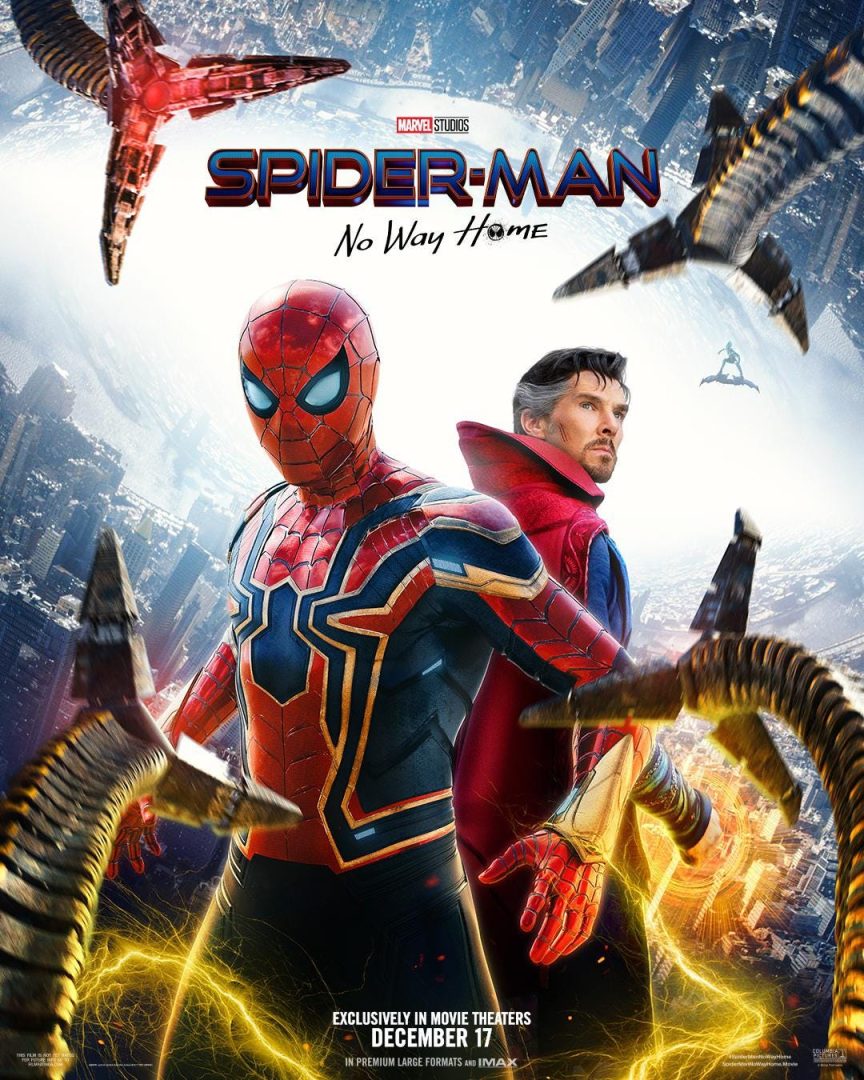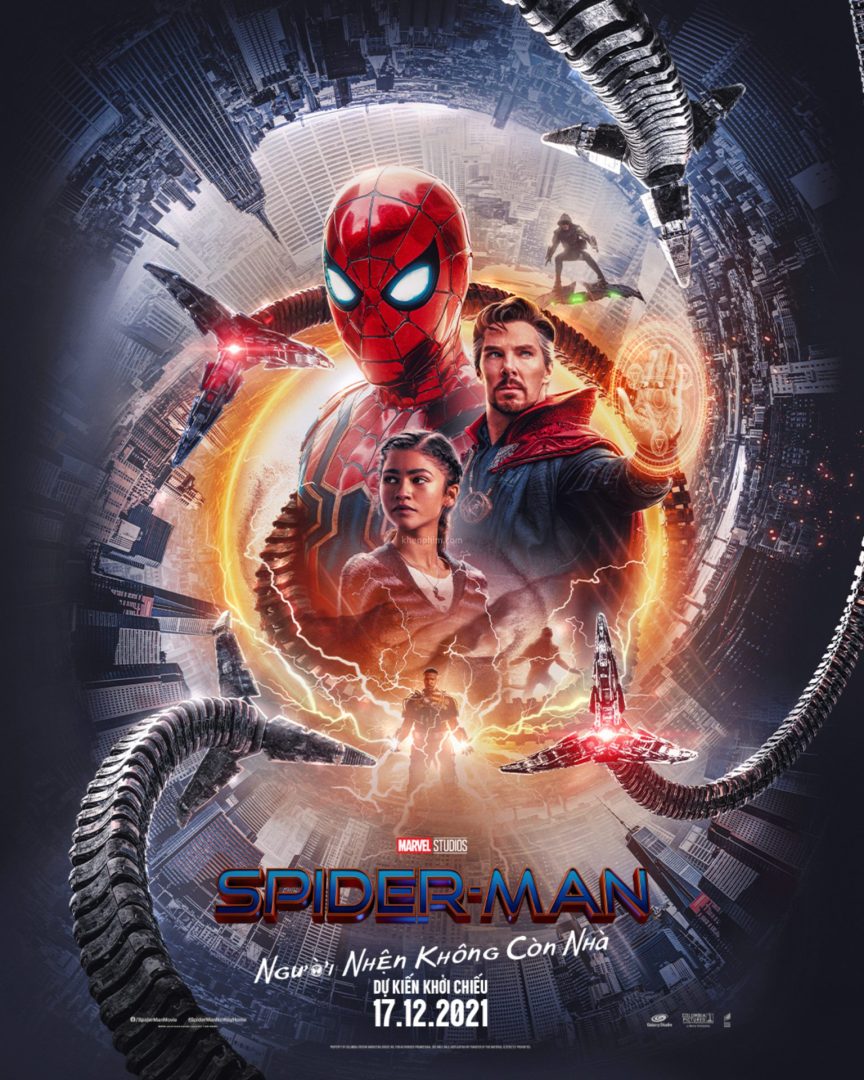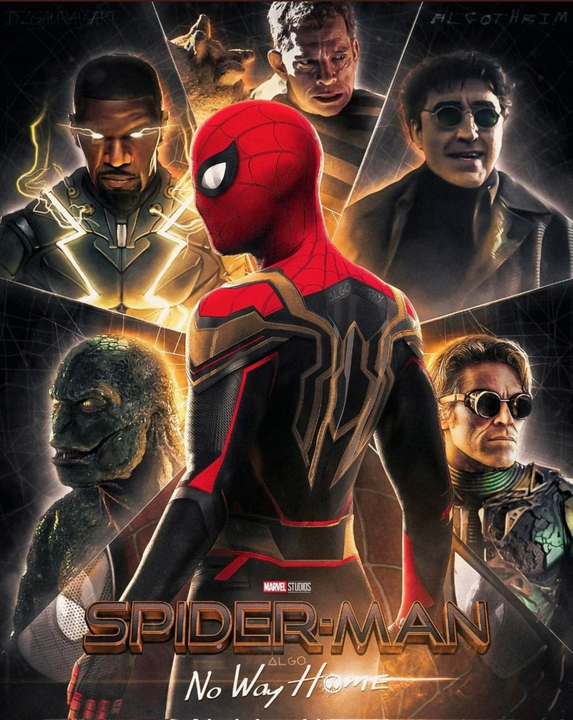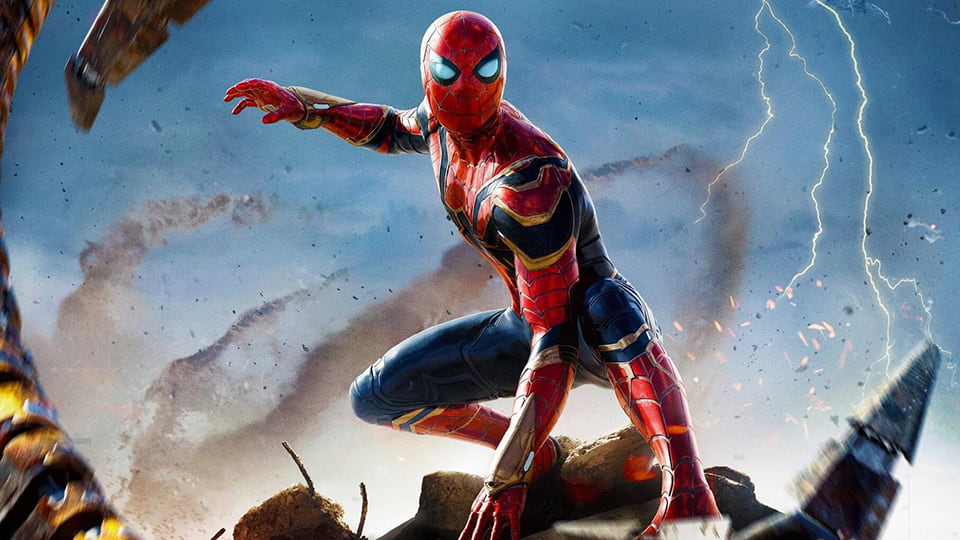Introduction
Spider-Man: No Way Home (2021) takes viewers on an epic ride through the Marvel Cinematic Universe (MCU) with a plot that revolves around one of the most exciting and complex concepts in superhero films—the multiverse. Directed by Jon Watts and starring Tom Holland as Peter Parker, the film builds on the emotional and action-packed foundation of previous Spider-Man movies while adding a fresh twist. The return of iconic Spider-Man characters from previous franchises and the mind-bending multiverse concept make this a game-changing film in the superhero genre.
In this review, we’ll explore how Spider-Man: No Way Home blends nostalgia, emotional depth, and mind-blowing multiverse action to deliver one of the most thrilling superhero movies in recent years.
What Makes Spider-Man: No Way Home Special?
One of the most exciting aspects of Spider-Man: No Way Home is its successful integration of the multiverse. This concept allows for the convergence of characters and villains from previous Spider-Man franchises—Tobey Maguire’s and Andrew Garfield’s Spider-Men join forces with Tom Holland’s Peter Parker to take on a common enemy. This crossover not only excites long-time fans of the franchise but also brings fresh dynamics into the fold, blending nostalgia with cutting-edge storytelling.
Moreover, the film doesn’t just rely on the multiverse for spectacle; it also delves deeply into the emotional journey of Peter Parker. At its core, No Way Home is a story about loss, responsibility, and the personal consequences of being Spider-Man. This balance of nostalgia and emotional depth is what truly sets Spider-Man: No Way Home apart from other superhero films.

The multiverse concept in *Spider-Man: No Way Home brings together iconic Spider-Men, creating thrilling moments for fans of all ages.*
The Plot and Storytelling
The Multiverse Twist
The film opens with Peter Parker facing the fallout of his identity being revealed to the world, which has severe consequences for him and his loved ones. Seeking a solution, Peter turns to Doctor Strange (Benedict Cumberbatch) for help, only to accidentally open a rift in the multiverse. This rift brings villains from alternate realities into Peter’s world, including characters from the previous Spider-Man franchises, such as Alfred Molina’s Doc Ock and Willem Dafoe’s Green Goblin.
The inclusion of the multiverse is not just a plot device to bring together different characters but serves as a way to explore deeper themes such as identity, responsibility, and the consequences of one’s actions. The film’s balance between action and heart is enhanced by these multiversal conflicts, adding layers of complexity to what could have been just a simple superhero story.
Peter Parker’s Struggles
At its core, Spider-Man: No Way Home focuses on Peter Parker’s growth as a character. This film represents a pivotal point in Peter’s journey, as he deals with the unintended consequences of his decisions. His desire to fix his life leads to increasingly complex and dangerous situations, forcing him to reckon with the reality that his actions have far-reaching impacts not only on his life but on the lives of those around him.
Tom Holland’s performance as Peter is particularly strong here, portraying the young hero’s emotional vulnerability while navigating the burdens of being Spider-Man. It’s clear that Peter’s journey is not just about fighting villains; it’s about understanding the cost of being a hero and the sacrifices that come with it.
Characters and Performances
Tom Holland as Peter Parker
Tom Holland’s portrayal of Peter Parker in No Way Home showcases his range as an actor. While his previous performances have balanced humor and action, this film demands a more mature and emotionally complex version of Peter. The weight of Peter’s decisions—specifically the choice to seek Doctor Strange’s help—drives much of the plot, and Holland nails the emotional nuances of the character.
What sets Holland’s performance apart is his ability to show Peter’s inner conflict. Whether he’s struggling with his guilt over the consequences of his actions or battling the multiversal threats, Holland keeps Peter’s humanity at the forefront of the story. His chemistry with Zendaya’s MJ adds another layer to his character’s emotional journey.
The Return of Tobey Maguire and Andrew Garfield
One of the most iconic moments in Spider-Man: No Way Home is the return of Tobey Maguire and Andrew Garfield as their respective versions of Spider-Man. These surprise cameos are not just fan service; they serve a deeper purpose in the story. Tobey Maguire’s Spider-Man is portrayed as an experienced mentor, offering wisdom and guidance to Holland’s Peter, while Garfield’s Spider-Man, having suffered his own personal tragedies, provides a sense of camaraderie and shared experience.
Their inclusion allows the film to explore themes of mentorship and the idea that every version of Spider-Man faces similar challenges. The interactions between the three Spider-Men are filled with humor and heart, adding a layer of nostalgia while also driving the emotional narrative forward.

The reunion of three Spider-Men in *No Way Home is a landmark moment for fans and adds emotional depth to the film.*
Zendaya as MJ
Zendaya’s portrayal of MJ in No Way Home is also a standout. MJ’s character has grown from being Peter’s girlfriend to a strong and independent ally who plays a significant role in his emotional journey. In this film, she helps anchor Peter, serving as his emotional support during one of the most difficult times of his life.
Her relationship with Peter is genuine, and Zendaya brings a level of depth and maturity to MJ that makes her an essential part of Peter’s story. It’s clear that MJ is more than just a love interest—she is an integral part of Peter’s evolution as a character.
Cinematography and Visuals
Action Sequences and Visuals
Spider-Man: No Way Home doesn’t disappoint when it comes to action sequences. The film blends intense fight scenes with the excitement of the multiverse, allowing for spectacular battles involving various Spider-Man versions and their iconic villains. From swinging through the city to high-energy confrontations with Green Goblin and Doc Ock, the action in this film is visually stunning and keeps viewers on the edge of their seats.
What stands out is the use of visual effects to bring the multiverse to life. The transitions between different dimensions are seamless, creating a visually engaging experience that enhances the film’s emotional stakes. Each Spider-Man universe feels distinct, and the film’s CGI enhances the action without overshadowing the emotional depth of the story.

The thrilling action sequences in *Spider-Man: No Way Home keep viewers engaged and visually amazed.*
The Role of CGI in the Multiverse
The use of CGI in No Way Home is essential to bringing the multiverse concept to life. The film’s visual effects team does an incredible job of blending CGI with practical effects, making the action feel grounded yet extraordinary. From the appearance of villains to the merging of different universes, CGI helps create a truly immersive experience.
However, the film doesn’t just rely on special effects. The emotional moments and character-driven storytelling shine through despite the digital spectacle, proving that visual effects are there to enhance the story, not overshadow it.
Stay tuned for part two of our review, where we’ll dive deeper into the film’s reception, its impact on the superhero genre, and its lasting legacy.
Reception and Impact
Box Office and Critical Reception
Spider-Man: No Way Home has been a monumental success both critically and commercially. It quickly became one of the highest-grossing films of 2021 and was met with critical acclaim for its fresh yet nostalgic take on the Spider-Man saga. Audiences flocked to theaters in record numbers, drawn by the promise of a multiverse crossover and the return of beloved Spider-Man characters.
Critics particularly praised the film’s balance of action, emotion, and the multiverse concept. The performances by Tom Holland, Tobey Maguire, and Andrew Garfield were highlights, with Holland’s emotional portrayal of Peter Parker standing out as one of his best performances to date. The film’s ability to honor its past while pushing the narrative forward has made it a milestone in the superhero genre.
“Spider-Man: No Way Home* is a love letter to Spider-Man fans, blending nostalgia with emotional storytelling in a way few superhero films have managed.”* — Rotten Tomatoes

The critical success and box office performance of *Spider-Man: No Way Home solidify it as one of the best superhero films of all time.*
Cultural Impact of No Way Home
Beyond its box office performance, Spider-Man: No Way Home has made a lasting cultural impact. The film’s multiverse storyline, which brought together three versions of Spider-Man, has sparked countless discussions among fans and critics alike. Its innovative approach to blending different cinematic universes sets a precedent for future crossovers in the superhero genre.
The film also rekindled interest in the previous Spider-Man films, particularly the earlier Spider-Man franchises. Fans took to social media to discuss their favorite moments from the movie, leading to a renewed sense of excitement around the character of Spider-Man. No Way Home’s success has also led to speculation about future MCU films and potential spin-offs based on the characters introduced in this movie.
Conclusion
Final Thoughts on Spider-Man: No Way Home
Spider-Man: No Way Home is a triumphant achievement that pushes the boundaries of superhero filmmaking. With its masterful blend of emotional depth, high-stakes action, and the multiverse concept, the film offers a fresh take on the iconic hero while celebrating the legacy of Spider-Man. The performances, especially from Tom Holland, Tobey Maguire, and Andrew Garfield, elevate the film to new heights, delivering an unforgettable cinematic experience.
This film is a game-changer not only for Spider-Man but for superhero films as a whole. It successfully balances the nostalgia fans love with meaningful character development, making it one of the most impactful superhero films in recent memory. If you’re a Spider-Man fan—or a fan of superhero films in general—Spider-Man: No Way Home is an absolute must-see.
“Spider-Man: No Way Home* is a cinematic masterpiece that will be remembered for years to come.”* — Collider
Frequently Asked Questions (FAQs)
Q1: Do I need to watch previous Spider-Man films to understand No Way Home?
While Spider-Man: No Way Home can be enjoyed by newcomers, watching previous Spider-Man films—particularly those featuring Tobey Maguire and Andrew Garfield—enhances the experience. The film’s multiverse concept relies heavily on the past Spider-Man movies, making it more rewarding for fans familiar with the character’s history.
Q2: Are Tobey Maguire and Andrew Garfield in the film for a significant amount of time?
Yes, Tobey Maguire and Andrew Garfield reprise their roles as Spider-Man in No Way Home, playing key roles in the plot. Their appearances are significant and add emotional depth to the film, especially in their interactions with Tom Holland’s Spider-Man.
Q3: Will there be a sequel to Spider-Man: No Way Home?
While a direct sequel has not been officially confirmed, Spider-Man: No Way Home sets up potential storylines for future Spider-Man films. Fans can expect more multiverse-related content in upcoming MCU films, and there are speculations regarding spin-offs featuring characters introduced in the film.

